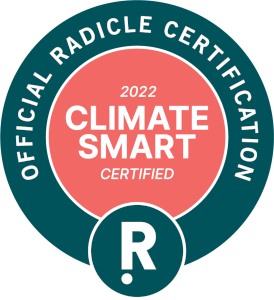Content is king or so the saying goes (we prefer content is queen but that’s a whole other story). Over the last few years, as digital technologies and social networks have grown, content creation has become the main pillar of successful online marketing strategies.
The phrase ‘content is king’ coined by Bill Gates, is often cited, as creating content that gives visitors and followers something new to consume on your site or social platforms is paramount to successful online marketing. This can also form the first step in getting readers into your funnel.
What is Content Marketing?
Content is one of the most important things to consider when marketing online in 2021. When we refer to ‘content’ we are talking about the relevant material that can be shared through platforms, like social media or your company’s website. Content can come in many different forms of media, from articles to videos, announcements of upcoming events, and blog posts. Content marketing is the process of producing different types of communications, intending to influence a targeted consumer base to initiate action, which in turn grows revenue, builds business and increases profit. In adding value, educating and showcasing what makes your company unique, content marketing is a great way to help you stand out from the crowd and build a lasting relationship with your customer base.
Types of Content Marketing
Content marketing can come in many forms like blogging, videos, podcasts, infographics, emails, ebooks, visual content and more. Blogging and visual content (images, infographics) that can be used on social media are the most popular as they are cost-effective to produce, and can be great ways to increase website traffic. Another digital marketing benefit of having a blog is that it is still one of the most cost-effective and beneficial ways to increase links to your website (which in turn can help your site show up higher on the search engine results pages). Blogs are also a great way to establish the voice behind your brand and to help you connect with your audience, they allow your customer to get to know you or a cause your company is passionate about, without directly being ‘sold’ to. The benefits and profit increase from blogging can explain why 53 per cent of marketers in 2021 declare blogging as their main form of content marketing.
Here are some blogging tips to improve or get started on your blog.
On the other hand, some forms of content, like videos, can be super expensive to produce, which is why many companies start by blogging and expand from there. Video can be very compelling, though. Despite being expensive, it is one of the strongest forms of content marketing—people spend more time watching videos online than any other media. According to Wordstream, consumers who end up on an e-commerce site through a user-generated video are 184% more likely to purchase and spend 45% more.
As social media marketing has grown in popularity, so has the need for different types of intriguing content to share on those platforms. Most visual content can be easily formatted for social media (there’s a plethora of tools like Canva to help you do so), it is not only a convenient way to reach your audience but often gets high engagement (likes, shares and comments). Types of content, like photos, videos, infographics, and other visual content are easily shared and absorbed through social media platforms, like Twitter, Instagram or Linkedin. Using social media for content marketing is beneficial because it can build connections and trust by making your company more personable while increasing brand awareness and loyalty.
What is a Content Marketing Strategy
A great way to ensure you connect with your target audience while prompting prospective customers to take action is to create a content marketing strategy and share high-quality content. A content marketing strategy is a way to drive business goals through media content, by building a plan of what content you will be distributed, when and where. A content marketing strategy is important because it allows you to stay organized, by having an outline of what you are going to post and when, so you won’t ever miss a post again. Additionally, by creating a content marketing strategy, you will be able to further assess what content is doing the best, so you can improve and keep getting better.
A great content marketing strategy answers some important questions.
- What are my business goals? It is important to outline your goals to formulate a way to reach them. If you have a business plan you’ve likely thought this through already. Your content marketing strategy is an extension of your business plan – your online marketing strategy and goals should align.
- Who is my target audience? To appeal to your intended customers, and reach your goals, you need to understand who you are trying to appeal to. Is your niche segment seniors? Teenagers? Cooking fanatics? Or avid hikers? Once you have this figured out, you can begin to outline what media would appeal to that target group. Knowing your target audience, you can assess your social media platforms and their target demographics, to be seen by the right people. For example, if your target audience is teens, you may want to direct more of your content towards Instagram or Tiktok. However, if your audience is the business community, Linkedin or Twitter may be more beneficial platforms to publish content to. Pinterest can also be a useful platform to market your content on, here are some tips
- What content works? Or what does not work? If you have past content, the analytics feature on social media platforms is a great indication of what works or does not work. Looking at the analytics, you will be able to see which of your posts have the most likes, shares, comments and interactions. Google Analytics is also a great tool that provides insight into which posts get the most traffic and engagement, directly on your website. From there, you can easily pinpoint the most effective content for your prospective customers. For example, if a lot of the videos on your page have lots of likes and shares, where your infographics seem to be doing not as great, you will know to post more videos in the future. From here you can decide what types of content you would like to produce and what content your consumers resonate with.
- What is our Buyer Journey? When creating your strategy, you should also consider the buyer’s journey (familiarize yourself with the buyer journey stages). By understanding your buyer’s journey, you can then formulate your strategy to fit your consumer’s buyer’s journey and thus build in the most interaction at the right times to build more revenue potential.
How to Make a Content Calendar
Once you have outlined the type of content that you will focus on, the next step in creating a content marketing strategy is to create a content calendar. A calendar includes exactly what you will be distributing and when. It can also include any scheduling or tasks for various employees, if applicable. A good calendar will outline a few essential aspects of your plan:
- Who will make it? And when? – A calendar will outline who will be creating content when they will be posting it and what will be posted. All tasks should be allocated to specific people and be detailed, so everyone knows what they will need to do. In addition to planning who will be creating and posting content, it is also helpful to outline the frequency of posts by scheduling the date and time each post should be made. To build your calendar, you have to decide what times you will be posting your content. Tools like Sprout Social, help you know the best times to post, so your posts can have the widest reach.
- How will you make content? Or where will you find it? – When you know the type of materials you will be producing, the first step to getting the ball rolling is to outline where you will find content, how you will create it, and who will be responsible for its creation. Online graphic design tools, like Canva or Pixelied can be incredibly useful for building visual posts like infographics, where they help you to easily create intriguing and unique visuals.
- Resources – Marketing content can also include links to interesting sites or articles. Creating a list of resources, like websites where you find reliable and informative material that you can share with your consumers, can be helpful to guide you in your content construction and lend inspiration for your ongoing content.
- Search engine optimization – SEO should be taken into account when content marketing, to be found online. For example, if you have an idea of the content you would like to market, checking out similar content to see what people are looking for is a great place to start to see if it is the right type of content for your business. From there, you can research keywords that potential customers are looking at and then include them in your piece of content, this will help your content be found with all the other content in the same category.
- What platform(s) will you be posting on? – Before setting up your calendar, you should assess which platforms align most with your target audience. From there you can choose and schedule what platforms you will be posting what content to. Picking and choosing specific platforms (the ones your target audience uses the most) to ensure you aren’t spreading yourself too thin or spending valuable time creating content for platforms that aren’t bringing in traffic, is important.
- A copy or synopsis of what will be posted – For example, the text that will be shown and the image or infographic that will be posted with it.
- A link to the final post – A link to your published post can be included to easily navigate your content and platforms.
A marketing calendar schedule builder is incredibly useful for formulating your content marketing schedule. Some suggestions of builders to use are Hootsuite, CoSchedule , and HubSpot – each one has a free content calendar you can download and use too.
How to Generate Profit from your Content
Once you have created your content and planned where to publish it, your work isn’t done yet. To effectively increase profit through content, there are some on-site factors to consider:
- Keep an Eye on Traffic
Once you have content production rolling, it is important to assess traffic from each platform and continually check in on your website traffic (using tools like Google Analytics) to see what content streams are bringing in the most traffic to your site and to determine how to transform it into profit.
- Help Visitors To Convert
Once you have attracted customers to your site, call-to-action buttons are a great eye-catching option to turn a visitor on your site into a customer. Call to action buttons can be anything from a prompt to join a newsletter, to a free trial of a service or to buy now. Using scarcity, like a limited-time offer can also very effectively interest customers. Make sure to reflect these promos on your social media profiles as well.
- Ease of Navigation
Your site should be easy for visitors to find their way around. Internal links (links from one page on a website to another page on the same website) help them to do so. Including internal links on your page can be incredibly useful to increase the time people spend on your site, to help visitors to navigate towards the goals you have for your site and the actions you want visitors to take, and can improve the website’s search engine optimization (SEO) by spreading link equity across the site.
Content marketing is an amazing way to grow your business revenue as well as to enhance customer relationships and build trust. By outlining your target audience and creating a content strategy, you will be able to produce a content calendar that will not only help you market and grow your business but it will also drive links towards your website through external sources, like social media platforms and improve your search engine results. Although some types of content are quite expensive to produce, there are types of content, like photos and blog posts, that are very cost-effective, so that means all companies, of any size should be following these simple steps and creating content to market especially now that so much emphasis is on doing business online.
Contact us to learn more about how we can help you to develop a content strategy that helps you to create great content for your audiences.




